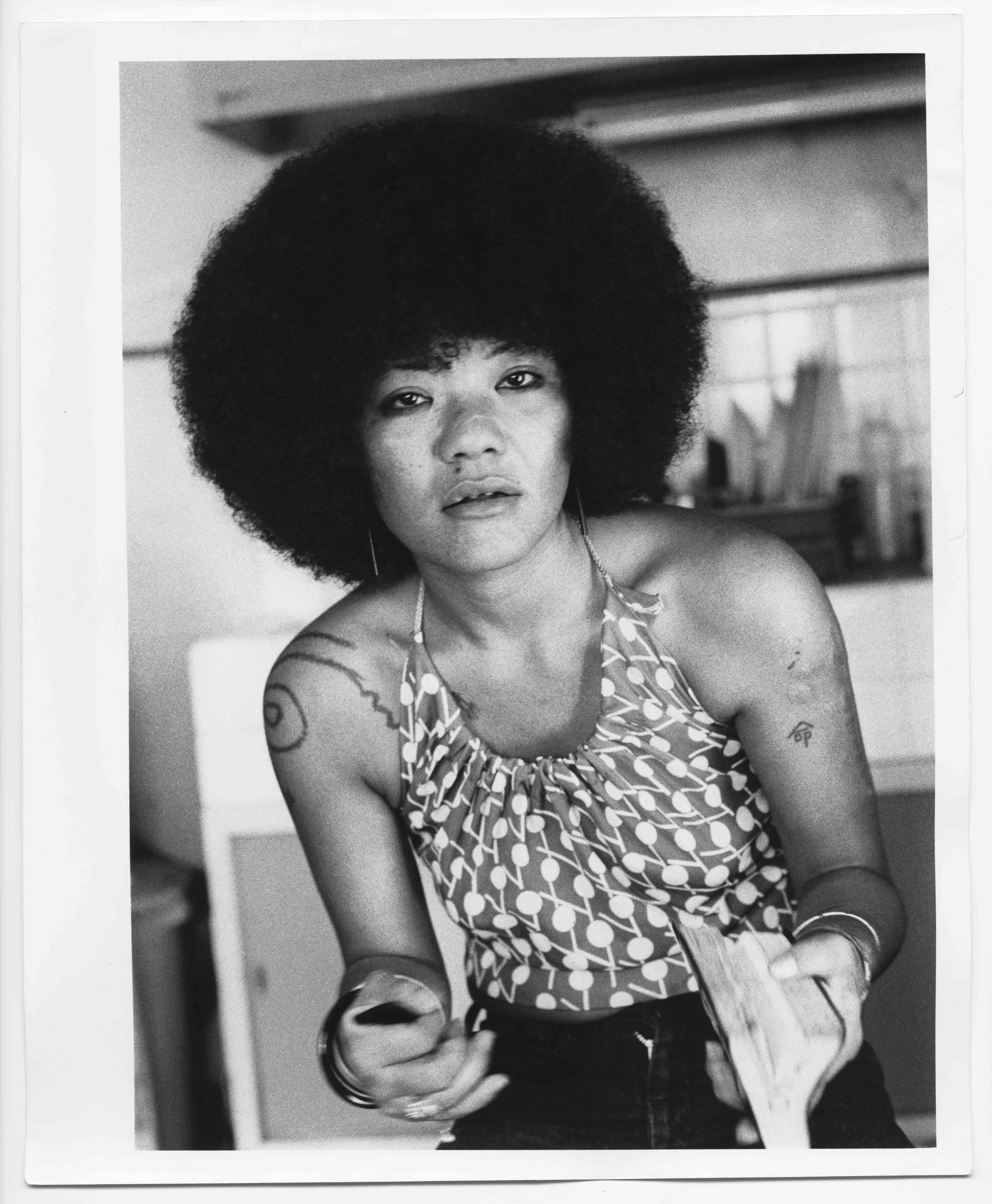Red Flower, The Women of Okinawa
Session Press
2017
112 pages
Photography: Mao Ishikawa
Text: Mao Ishikawa
English Translation: Jun Sato
Design: Studio Lin, NYC
Printing: Die Keure, Brugge, BE
Color Proofing: Colour & Books, Apeldoorn, NL
Silkscreen soft cover covers and silkscreen text pages
closed 229 x 330 mm (9.02 x 12.99 inches), open 458 x 330 mm (18.03 x 12.99 inches), 3 lbs
ISBN: 978-0-692-81744-5
Mao Ishikawa

Session Press presents Red Flower, The Women of Okinawa, the first United States monograph by Okinawan photographer Mao Ishikawa. Red Flower consists of 80 b/w photographs that date from 1975 to 1977 in Koza and Kin, Okinawa, primarily from Ishikawa’s first book Hot Days in Camp Hansen by A-man Shuppan in 1982, but it also includes unpublished work from the same period. Red Flower exhibits Ishikawa’s celebration of the courageous and honest lives of women she met and befriended while working at military bars at a time when social and political tensions between the US and Japan were on high alert. It consists of five chapters of pictures, followed by her essay dedicated to the publication: girls gossiping about boys, working at bar, meeting their boyfriends at home, enjoying themselves at the beach, and their children for the future of Okinawa. Red Flower is the pivotal work for Ishikawa, since it marks the starting point of her subsequent long career as a photographer.
Her attendance of Shomei Tomatsu’s class at WORKSHOP photography school in spring 1974 seems to have had a strong influence on her style; their close association as friends and teacher/student continued till his death in 2012. Martin Parr identifies her work as ‘post-Provoke’ in The Photobook: A History Volume III (page 90), observing the strength of her photography is charged by its directness and rawness, in contrast to the stylized symbolism preferred by the previous generation of Provoke photographers. Most importantly, it is crucial to note that her work is often delivered from the result of her pure pursuit of her subject matter. Especially for this particular project, Ishikawa’s engagement to the subject was enormous; she worked as a server at the bars along with the other girls and had relationships with boys she met there for two years. Thus, her personal involvement enables her to capture the actual events and scene without theorizing or romanticizing. In Red Flower, Ishikawa reveals her very honest personal documentary in all sincerity, while still maintaining enough detachment from the subject to be able to perfectly capture the scenes with her sharp eyes.
Okinawa has been one of the most popular subjects in the history of Japanese photography, having attracted many renowned Japanese photography masters such as Tomatsu Shomei, Daido Moriyama, Nobuyoshi Araki, and Keizo Kitajima. Born and raised in Okinawa, Ishikawa is, however, the only female photographer for still vigorously making work of Okinawa (and living in Okinawa) in spite of whatever taboo or challenges she came across along the way.
Previously Ishikawa made two publications on the same subject. Her first book, Camp Hansen is not, in fact, her monograph since another photographer, Toyomitsu Higa took the photos in the second half of the book. Also, it was regretfully banned due to claims from two girls in the book shortly after it was released, so it is extremely rare and expensive. The other volume of Ishikawa’s Okinawa work was published on the occasion of her exhibition at Yokohama Civic Art Gallery Azamino in 2013. Since it mainly functions as reference to her general work, and it was laid out with large white framing surrounding smaller format photos, it loses the boldness, honesty and urgency which are characteristic of her work. Red Flower features full-bleed images in a large format with intense black and white printing, and successfully makes the original lively spirit and tension of Ishikawa’s legendary Camp Hansen work available again for wider public appreciation.

